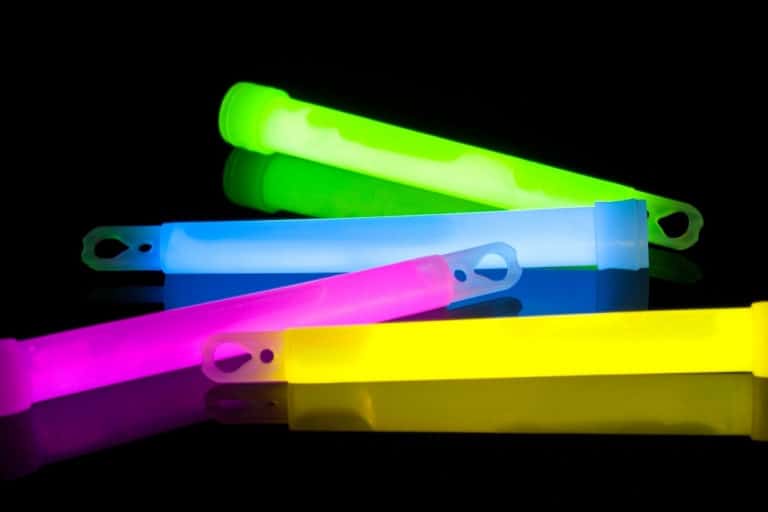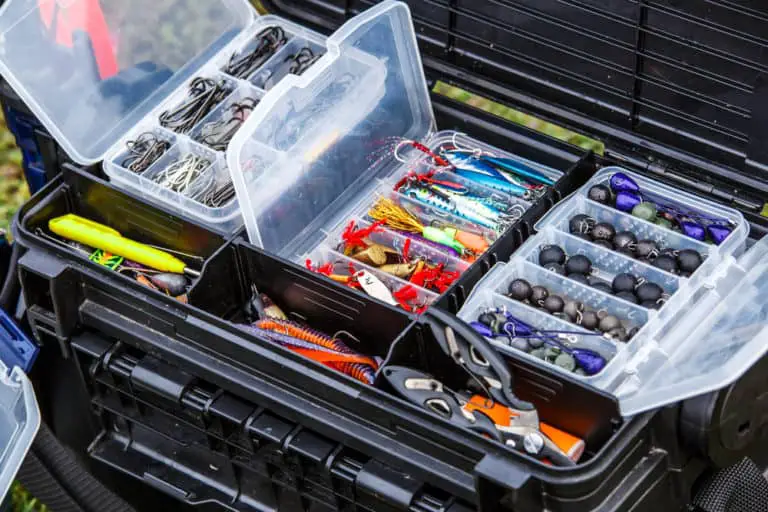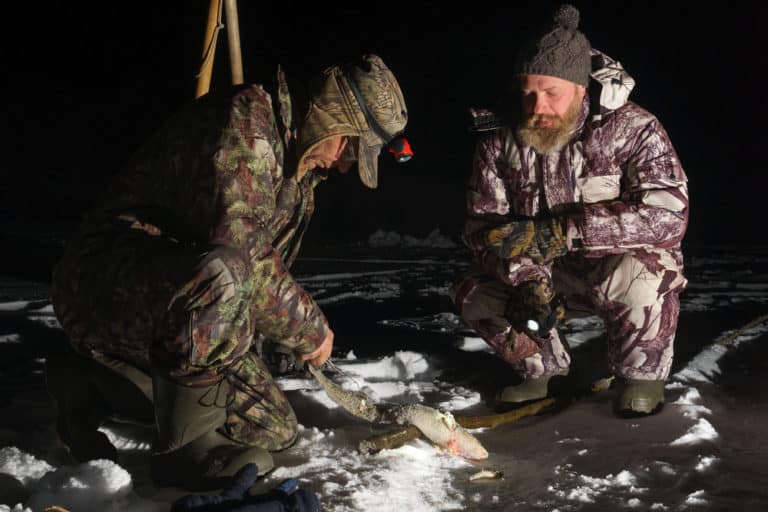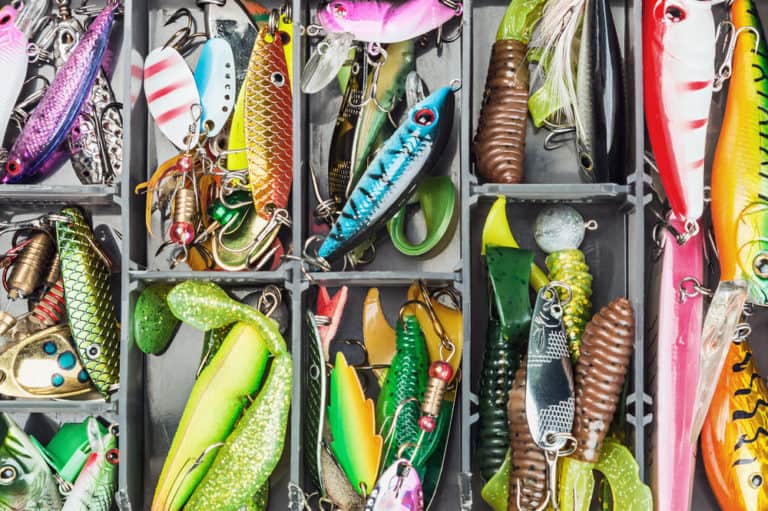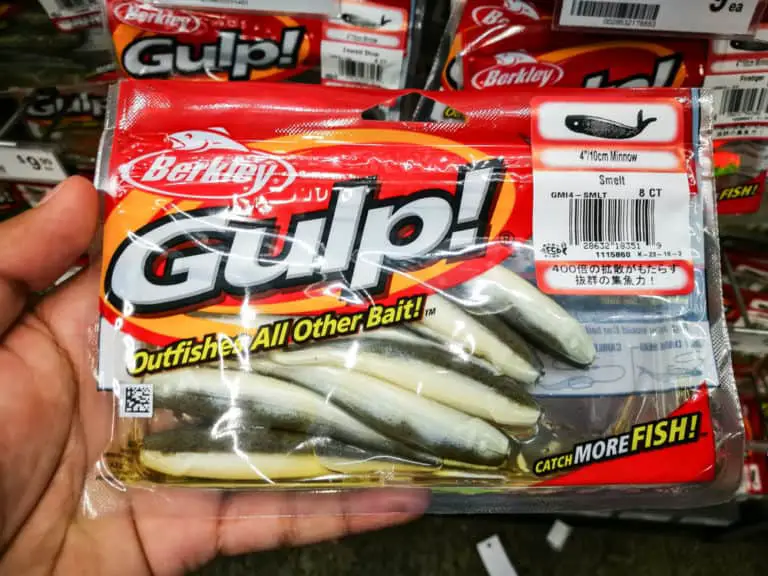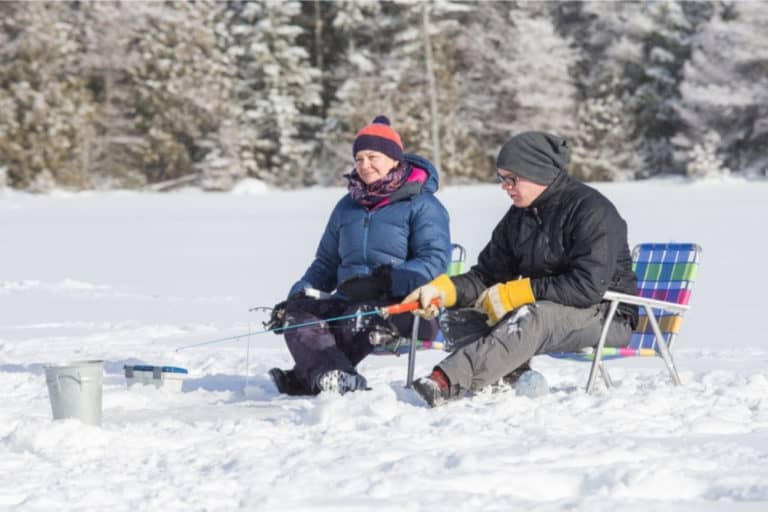Essential Tips for Ice Fishing at Night
If you’ve ever gone ice fishing, you’ll understand the importance of packing up your equipment and getting off the ice before the sun sets. While ice fishing at night is entirely possible, it’s a completely different sport from regular ice fishing, and there are far more dangers to be aware of.
Ice fishing at night means that you can take advantage of the darkness, which means you can fish for longer. However, ice fishing at night isn’t easy, and the right precautions should be taken in order to keep you safe and make the most out of your catch.
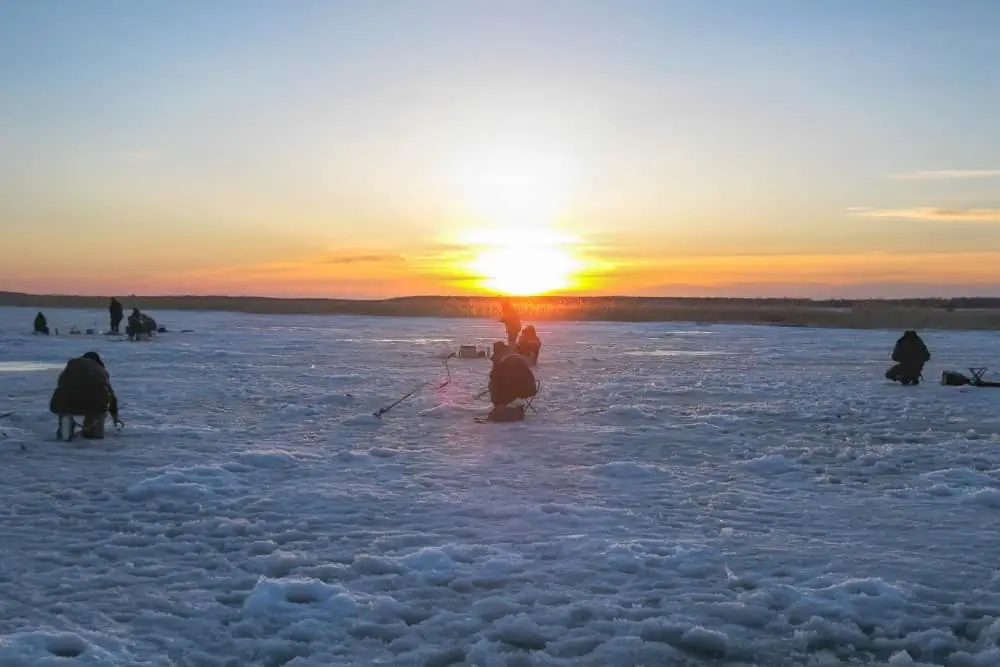
Here are our top tips for ice fishing at night.
Table of Contents
1. Plan Ahead
Finding a decent site to begin drilling holes is difficult enough during the day, let alone at night. Spend some time learning about the lake before heading out to scout before dark.
Mark locations worth exploring using a GPS. You’ll be able to navigate your way around at night this way. If you use a fish finder, you can use the built-in mapping to mark waypoints.
You can even fish for specific types of fish in the same honey holes you visited during the day. Crappie frequently stays put, while larger fish move in late to the feast.
2. Get there before sunset
Don’t pass up fishing’s golden hour. That is the half-hour before and after sunset when fish tend to increase their feeding as aquatic life shifts from day to night cycles.
Get out on the ice and get set up so you don’t miss out on that bite window. You will also avoid frightening fish on their journey to evening hunting grounds.
Walleye migrate from deeper places to flats in search of food. So, ultimately, if you set up your equipment before nightfall, you’ll avoid having to stumble around in the dark to find your spot.
3. Take the correct safety precautions
While ice fishing, there is always the possibility of harmful conditions. Take the same precautions at night as you would during the day. Tell someone where you’re going and when you’ll be back.
Be sure to only go on safe paths where the ice is known to be safe, and only move around with light to avoid unforeseen threats. It’s also a good idea to keep a signal light on to deter fast-moving snowmobiles on their way home.
4. Know what you’re looking for
Night fishing is not for everyone, and it is not suitable for every type of fish. While it varies by location and even by day, some fish species are more difficult to catch at night. In my experience, nighttime ice fishing for trout, bass, bluegill,
On evenings with a full moon, some anglers perform well. When it comes to feeding, most of these fish are sight-dependent, and darkness keeps them hunkered down.
Crappie and walleye are two of the most popular fish to catch at night. Crappie has improved night vision and highly attuned lateral lines, which allow them to detect vibrations and movements of prey.
Walleye are also excellent night hunters. Their large eyes absorb minute amounts of light, giving them an advantage over their prey.
Try night fishing regardless of the species of fish in your lake. The type of fish that bite at night differs from lake to lake.
5. Find out where the fish feed
Nocturnal feeders are drawn to deeper water throughout the day, but once the sun goes down, you can capitalize by understanding their routines. Crappie prefers to eat in basins near underwater humps and reefs.
They often float off the bottom, feeding on crustaceans and worms that emerge from the soft silt at night. Crappie is drawn to weed beds near shallows that support small minnows.
Walleye move from the depths to eat in shallow weed lines or flats under the cover of darkness. Look for shallows at deepwater breaks with green, healthy plants around. These will be the best feeding sites for large walleye.
6. Bring the right equipment
Moving around in the dark is difficult. Make it easier on yourself by bringing everything you’ll need for a night on the ice. Make a list before you leave the house. Extra batteries for lights, heaters, and food should be brought.
It’s impossible to predict how fantastic the ice fishing will be at night. It is preferable to be prepared than to leave early because you forgot something.
7. Bring electronic gadgets to help you
While electronics are not always required for success, they certainly make ice fishing at night much easier. Fish behavior changes dramatically at night, and a flasher or fish finder can help you pinpoint how fish react to lures.
Are they chasing the baits, or are they being turned off by too much movement? The answer is provided by electronic gadgets.
Fish are always on the move at night, and a fish finder is invaluable while you’re traveling from hole to hole trying to detect the fish as they move.
8. Bring sufficient lighting
This recommendation should probably be near the top of the list. A nice headlamp may make or break your night. Hands-free operation is convenient whether tying up a fresh lure or affixing a wax worm to a tungsten ice jig.
It’s also useful for charging your light lures. Most headlamps have a red or green light option, which is great for maintaining your night vision.
Remember to carry additional batteries as well. The cold can deplete the energy stored in batteries. Spares should be kept in your warmest pocket.
9. Consider bringing glow sticks
Here’s a tip for crappie enthusiasts. To attract slab crappie, try using the green underwater glow lights. The light attracts microscopic plankton and minnows, which crappie-like eating.
It is especially well suited to shallow water applications. The most popular LED glow sticks are manufactured by Hydro Glow. They are long-lasting and waterproof. They are powered by a 12v power supply and may run for hours.
A successful strategy is to position the light in the center of an ice hole and drill many fishing holes in a circular pattern about 20 feet distant from the light. That way, you’ll be ready to catch the crappie when they make their way toward the lights.

